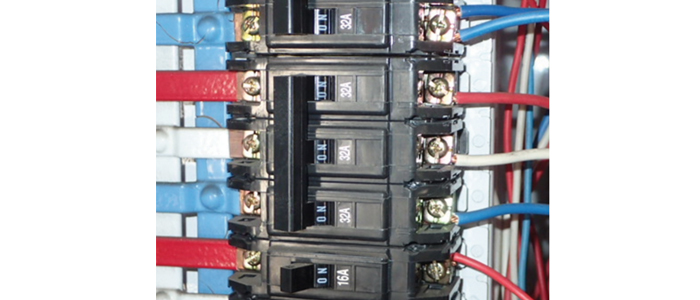- +61 7 3374 2877
- Email Us
Applying Thermography to Condition Monitoring relies on finding warm or cold anomalies. Then analysing these to determine whether they are due to normal operation of the plant or, if needs be, to further investigate to establish if they are the result of faulty conditions, which may eventually lead to failure.
By Erik Thorup, Technical Support, Committee of Management, AUSPTA Category 3 Thermographer, Electrical/Mechanical (AINDT/BINDT)
In this case we will look at the thermal pattern on an electrical 3 phase 32Amp circuit breaker of TERASAKI Safe-T brand, running a heater.
Here we will be exploring 3 points:
Below are the images taken on site in March 2023, using the FLIR T660 camera with normal 24° lens and 640×480 resolution. The Emissivity was set at 1.00 and an attempt was made to get the best focus possible.

An image was taken of the panel with the escutcheon on. As it can be seen, there is an indication of an anomaly, but you need to get direct line of sight access to the components inside to be able to assess if there is a problem.
Load on CBs will increase the temperature of the CB due to the internal trip mechanism heating up, usually a bimetallic strip. The increase in temperature (Delta-T) should follow the square of the load (I2), so the closer to the rated current a breaker gets, the higher increase would be expected (exponential rise).
The temperatures measured in this test however showed an almost direct linear relationship between the load and the temperature increase from ambient. However, we did NOT look directly at the bimetallic strip, and it is possible the 3-dimensional heat flow from the trip mechanism increases the surrounding moulded CB casing at a linear rate.